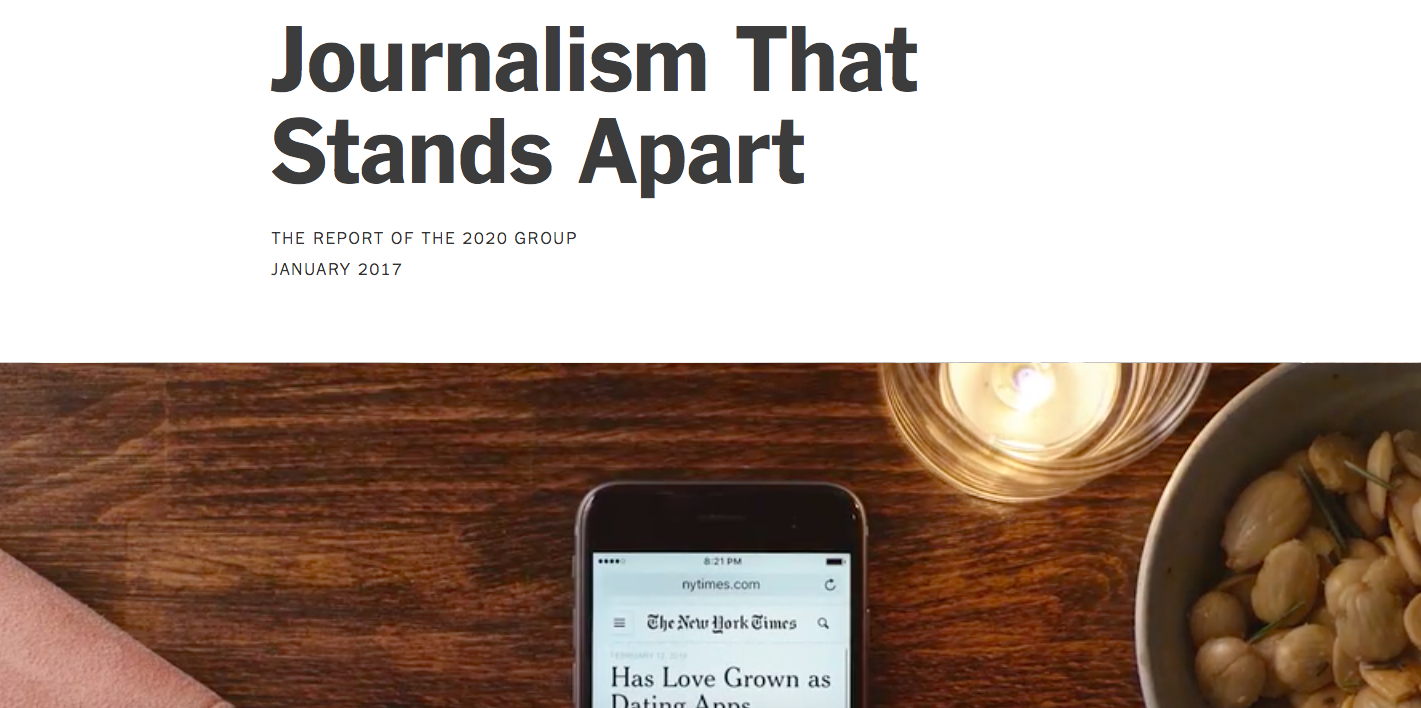During our past three posts, we have concentrated on the applications of the WED (Writing/Editing/Design) philosophy to the way we tell stories visually for mobile devices in particular.
I have emphasized that, as a student of how stories are presented, and, specifically, the type of story structures that are created to present different stories, I admire the work currently carried out by The New York Times, where many stories are presented in a linear way, with a blending of narratives and imagery.
The New York Times internal report

The New York Times recently released its second internal report which makes it clear that, while much progress has been made in the way Times stories are told, it is not enough. The report, titled “Journalism That Stands Apart,” but often referred to as the 2020 report,
The report begins with “The New York Times has deftly adapted to the demands of digital journalism, but it needs to change even more quickly,”.
For visual storytellers, this report is inspiring and forward looking, with statements like this:
“Among the other recommendations in The Times’s report were reducing duplicative layers of article editing, and having visual experts play “the primary role covering some stories” — part of an urgent call for more visual journalism”
The report is introspective and brutally honest:
“The Times publishes about 200 pieces of journalism every day. This number typically includes some of the best work published anywhere. It also includes too many stories that lack significant impact or audience — that do not help make The Times a valuable destination.”
“The most poorly read stories, it turns out, are often the most “dutiful” — incremental pieces, typically with minimal added context, without visuals and largely undifferentiated from the competition. They frequently do not clear the bar of journalism worth paying for, because similar versions are available free elsewhere.”
A highlight of the report:
“The report needs to become more visual:The Times has an unparalleled reputation for excellence in visual journalism. We have defined multimedia storytelling for the news industry and established ourselves as the clear leader. Yet despite our excellence, not enough of our report uses digital storytelling tools that allow for richer and more engaging journalism. Too much of our daily report remains dominated by long strings of text.”
Why the NYT report is an eye opener, full of opportunities
“We also need to become more comfortable with our photographers, videographers and graphics editors playing the primary role covering some stories, rather than a secondary role. The excellent journalism already being produced by these desks serves as a model.
“Given our established excellence in this area, creating a more visual daily report is an enormous opportunity.”
The story structures of the digital age
The NYT report emphasizes that “we have dozens of regularly appearing features built for the print edition but not enough for a digital ecosystem. We need more journalistic forms that make The Times a habit by frequently enlightening readers on major running stories, through email newsletters, alerts, FAQs, scoreboards, audio, video and forms yet to be invented.”
I have outlined a few of those new story structures or forms that are particularly good examples of WED, where the fusion of writing/editing/design fits perfect to tell stories for mobile. Take a look.
A palette for visual storytelling
The following stories, all published by The New York Times, show us clear and easy to understand examples of combining narratives, good navigation and visuals.
Breaking News: What We Know/Don't Know
Breaking News: Live Analysis/Chat
http://www.nytimes.com/interactive/2016/08/31/us/politics/trump-immigration-speech-live.html
Breaking News: Cinemagraphic Essay
http://www.nytimes.com/interactive/2016/12/16/world/middleeast/aleppo-evacuations-video.html
Quiz/Game
http://www.nytimes.com/interactive/2016/04/01/us/police-bodycam-video.html
Breaking News: Explainer
http://www.nytimes.com/interactive/2016/12/22/world/americas/trump-nuclear-tweet.html
Photo Story
http://www.nytimes.com/2016/10/27/world/middleeast/iraq-mosul-isis-car-bombs.html
Multimedia Story
http://www.nytimes.com/interactive/2016/06/22/world/americas/panama-canal.html
Previously and related
Visual storytelling via linear thinking:narrative of the story blends with the images accompanying it. https://www.garciamedia.com/blog/digital_storytelling_part_two_a_linear_fusion_of_narrative_imagery
Digital storytelling, Part One: The fusion of writing/editing/design
https://www.garciamedia.com/blog/digital_storytelling_part_one_the_fusion_of_writing_editing_design
Designers of all ages: Let’s rethink, reinvent and recharge
https://www.garciamedia.com/blog/designers_of_all_ages_lets_rethink_reinvent_and_recharge